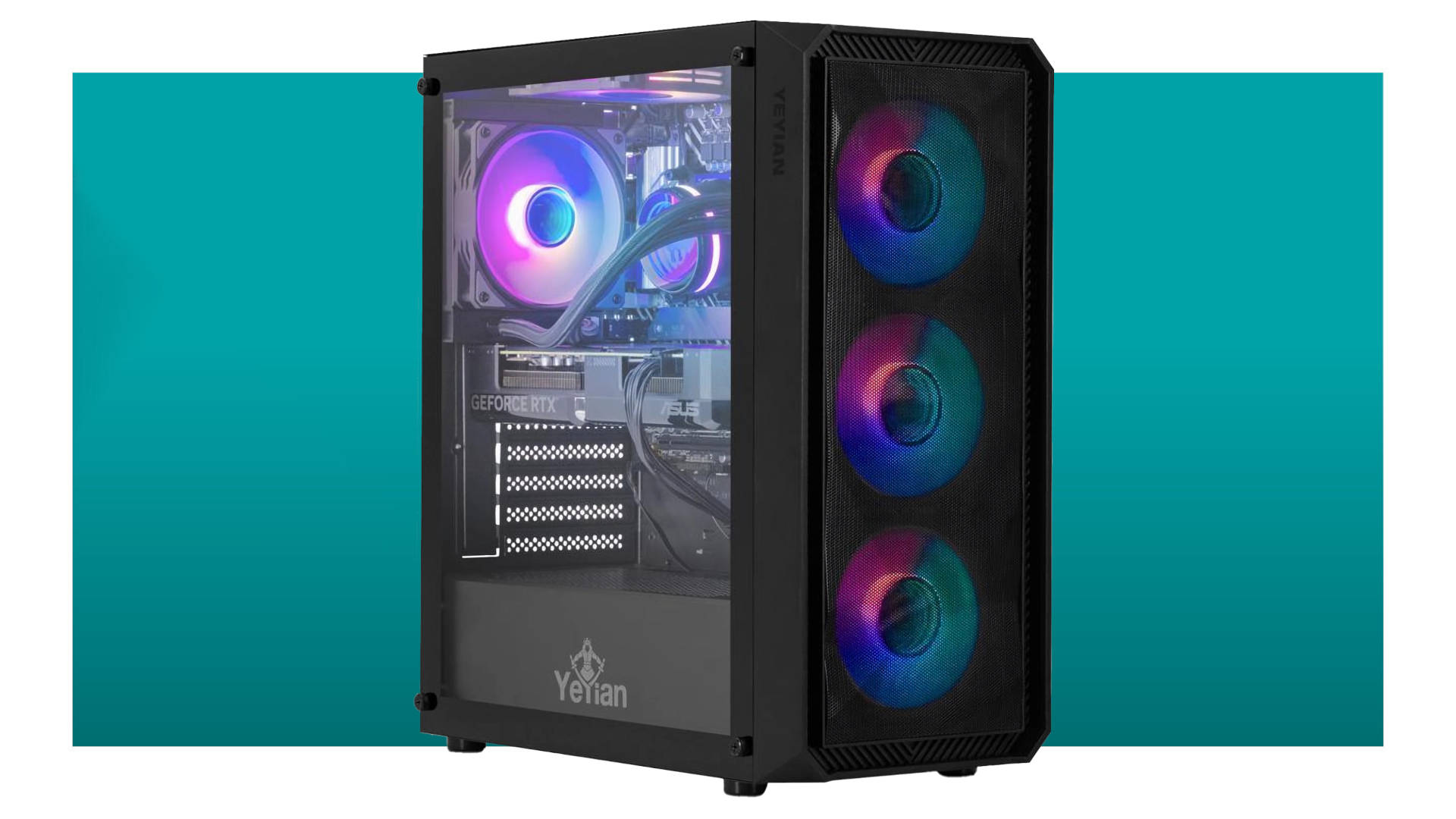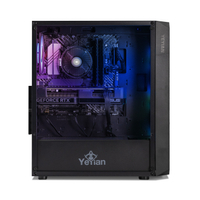For just under $860, you can have this little RTX 4060 gaming PC to get started in one of the best hobbies in the world
Intel-powered systems are a little cheaper but you might be put off with the idea of owning one at the moment.

Yeyian Tanto | RTX 4060 | Ryzen 5 7500F | 16 GB DDR5-4800 | 1 TB SSD| $1,099 $859 at Newegg (save $240)
It's a basic RTX 4060 gaming PC but there's nothing wrong with that, as long as you're not paying too much for one. At $859, this Yeyian Tanto is in the Goldilocks zone—not too much, not too little.
Price check: Amazon $959
If you've been put off getting a new budget gaming PC because of concerns over stories about Intel's instability issues with its Raptor Lake CPUs, then how about one that's still very affordable but uses a processor that's as stable as they come?
This Yeyian Tanto is powered by an AMD Ryzen 5 7500F chip and an Nvidia RTX 4060 graphics card, a combination that's nicely balanced for 1080p gaming. That Ryzen processor is basically a Ryzen 5 7600X with six cores and 12 threads. However, its internal GPU is disabled and it has a lower 65 W power limit, but at least the boost clock is only 300 MHz or 4% lower.
Sure, the 7500F's base clock is a full 1 GHz down on the 7600X's but it'll never run that low in games. What it does mean is that when idling on the desktop, the CPU will be running very cool and quiet, just sipping away at power.
There's nothing more to be said about the RTX 4060 that hasn't already been covered. Over-priced at launch and not exactly overladen with VRAM, Nvidia's budget Ada Lovelace GPU has more performance than many people give it credit. Add support in the full DLSS 3.5 feature set and you have a great little graphics card that's more than capable of running the latest games on high settings, at 1080p.
Throw in some DLSS upscaling or frame generation, and it'll cope with 1440p gaming too.
All budget gaming PCs have corners cut somewhere and this Yeyian Tanto is no different. You get 16 GB of DDR5, and it's a dual-channel kit, but it's only rated at 4,800 MT/s. That's a bit on the slow side but at least it's not hard to replace the RAM with a faster DDR5 kit if you felt the need.
The biggest cost-cutting design choice, though, is the motherboard—it's an Asus A620A model. There's nothing wrong with the brand, it's just that the A620 chipset is the most basic in AMD's 600-series, so there's no support for Gen5 SSDs, it has the least number of I/O ports, and you won't be able to use PBO to boost performance.
Lastly, there's the SSD. It's a decent enough size at 1 TB but it's only a Gen3 model, which is disappointing in the current market. I'd prefer a slow Gen4 SSD but at least it's not an HDD, which was commonplace in budget gaming PCs not that long ago.
On the plus side, the cooling setup is more than sufficient. That Ryzen 5 7500F is chilled by an AMD Wraith Stealth and there are four ARGB 120 mm fans (three in the front, one in the back). None of it is cutting-edge thermal management but it's perfectly adequate for the hardware inside the case. Speaking of which, the chassis has a nice balance of looks and airflow.
For just $859, you're only going to get something noticeably better by spending a whole lot more money so if you're looking to get into PC gaming and don't want to blow your bank balance, this Yeyian Tanto is a great way to get into one of the best hobbies around.
The biggest gaming news, reviews and hardware deals
Keep up to date with the most important stories and the best deals, as picked by the PC Gamer team.

Nick, gaming, and computers all first met in 1981, with the love affair starting on a Sinclair ZX81 in kit form and a book on ZX Basic. He ended up becoming a physics and IT teacher, but by the late 1990s decided it was time to cut his teeth writing for a long defunct UK tech site. He went on to do the same at Madonion, helping to write the help files for 3DMark and PCMark. After a short stint working at Beyond3D.com, Nick joined Futuremark (MadOnion rebranded) full-time, as editor-in-chief for its gaming and hardware section, YouGamers. After the site shutdown, he became an engineering and computing lecturer for many years, but missed the writing bug. Cue four years at TechSpot.com and over 100 long articles on anything and everything. He freely admits to being far too obsessed with GPUs and open world grindy RPGs, but who isn't these days?


